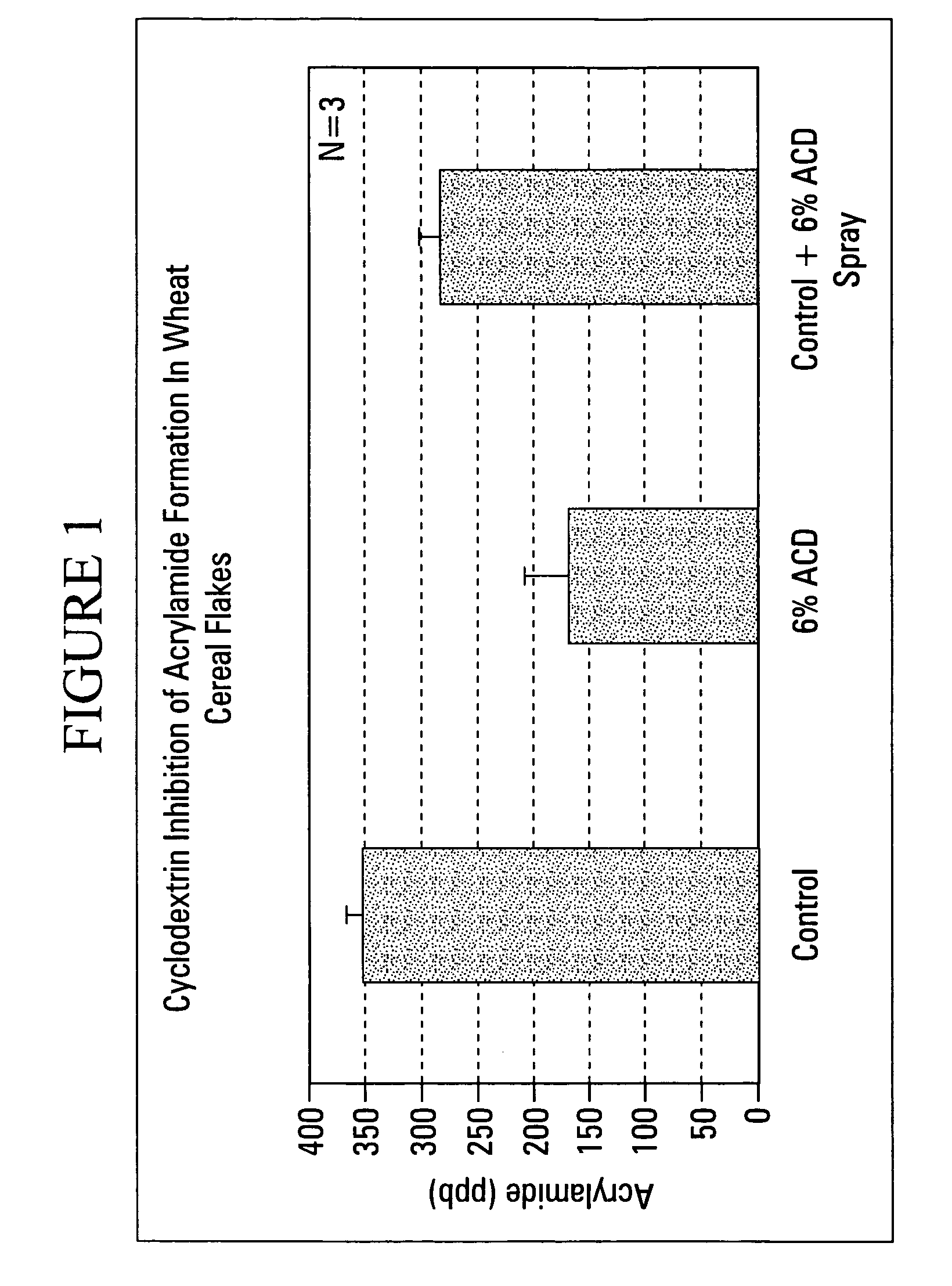Method for preventing acrylamide formation in food products and food intermediates
a technology of acrylamide and food products, applied in the field of new acrylamide prevention methods, can solve the problems of increasing the cost of delivering such products to market, cyclodextrins have not been used starches such as cyclodextrins have not been employed or known to be beneficial in reducing acrylamide levels, so as to achieve the effect of lowering acrylamide levels
- Summary
- Abstract
- Description
- Claims
- Application Information
AI Technical Summary
Benefits of technology
Problems solved by technology
Method used
Image
Examples
Embodiment Construction
[0025]The present invention is now illustrated in greater detail by way of the following detailed description, but it should be understood that the present invention is not to be construed as being limited thereto.
[0026]As used herein a food product and food intermediate may include an additive, component, supplement or ingredient useful in preparing or supplementing a food, or a food intermediate, a fully prepared composition but in a raw state (requiring a further treatment step prior to consumption, such as baking dough to produce bread) or a finished food product that is ready to eat. Food products and food intermediates as provided hereunder generally include any food products or food intermediates derived from or containing grain, cereal or vegetable based components. Food products may also include nutritional beverages and energy drinks.
[0027]A food treatment composition includes coatings, whether by spray, aerosols, liquid or fluid curtains, mists, fogs, dripping, bath, imme...
PUM
 Login to View More
Login to View More Abstract
Description
Claims
Application Information
 Login to View More
Login to View More - R&D
- Intellectual Property
- Life Sciences
- Materials
- Tech Scout
- Unparalleled Data Quality
- Higher Quality Content
- 60% Fewer Hallucinations
Browse by: Latest US Patents, China's latest patents, Technical Efficacy Thesaurus, Application Domain, Technology Topic, Popular Technical Reports.
© 2025 PatSnap. All rights reserved.Legal|Privacy policy|Modern Slavery Act Transparency Statement|Sitemap|About US| Contact US: help@patsnap.com


